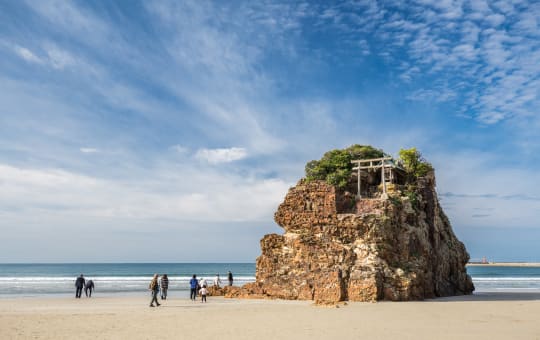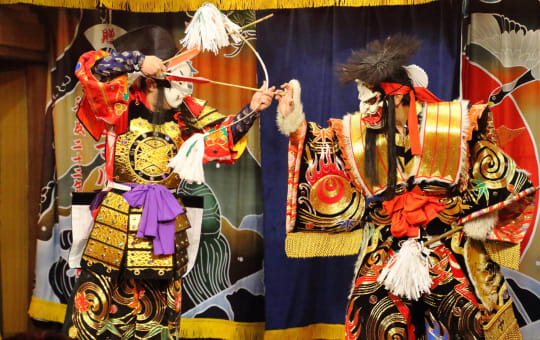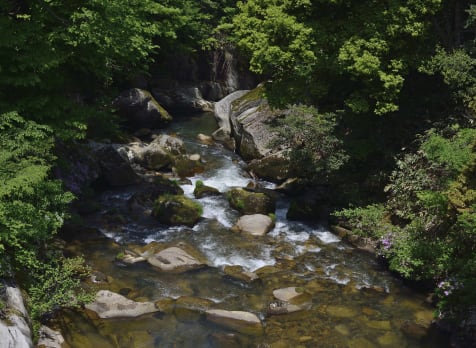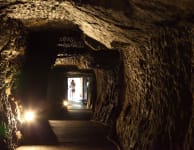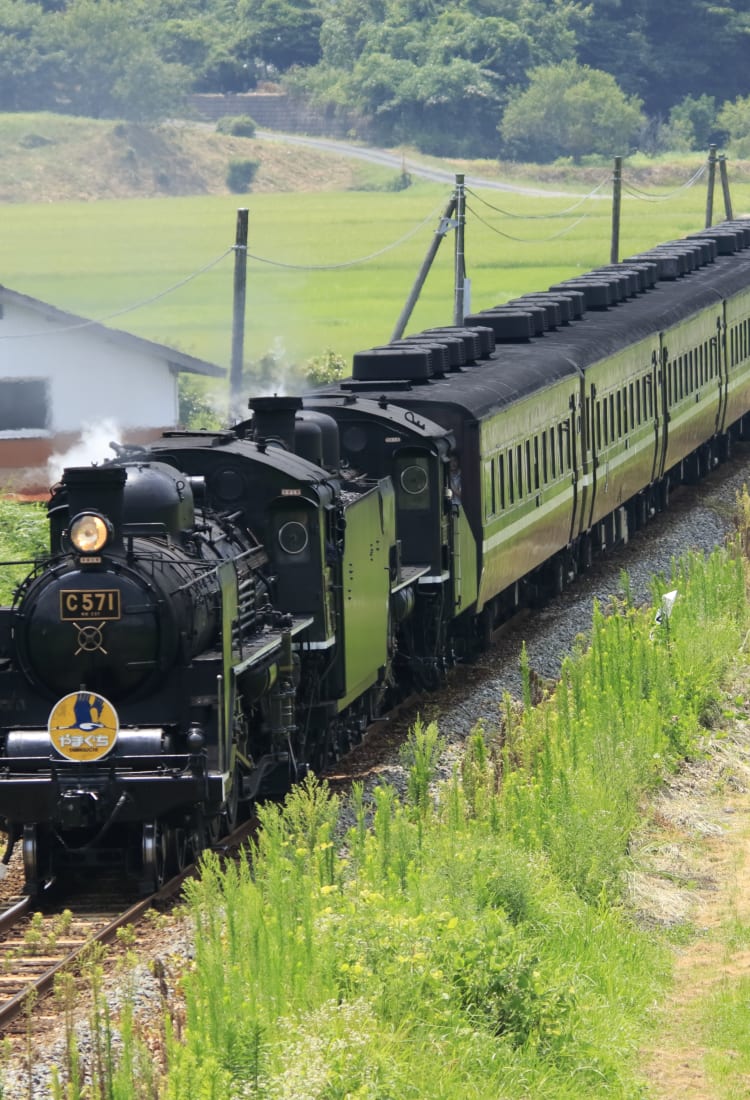

SHIMANE Tsuwano & Masuda An atmospheric castle town known as “Little Kyoto,” a steam locomotive and more
An atmospheric castle town known as “Little Kyoto,” a steam locomotive and more
A small castle town nestled in the mountains of the San-in Region, Tsuwano is a prime destination for savvy travelers seeking the best of Japan's history and culture without Kyoto's crowds.
In western Shimane, Masuda, another castle town, is the area's transportation hub. Often overlooked by visitors, it has a variety of attractions perfect for those with time to relax and unwind.
Don't Miss
- The thrilling horseback archery known as yabusame
- Zen gardens designed by the famed landscape painter and monk Sesshu
- Riding on the SL Yamaguchi-go steam locomotive
How to Get There
This area can be accessed by rail and air.
The Tsuwano and Masuda area is in the west of rural Shimane Prefecture on the Sea of Japan coast. Served by the coastal JR San-in Main Line that runs from Kyoto to the western tip of Honshu, Tsuwano is 30 minutes by express train from Masuda. The Shin-Yamaguchi shinkansen station is one hour from Tsuwano, and connects with Osaka in less than two hours and Tokyo in around four and a half hours. Hagi-Iwami Airport in Masuda has daily flights to and from Tokyo.
Quick Facts
The carp in Tsuwano were originally kept in the waterways as emergency provisions in case of famine
Yabusame horseback archery is considered a holy ritual
During the four centuries of Masuda clan rule, cultural pursuits flourished under its patronage
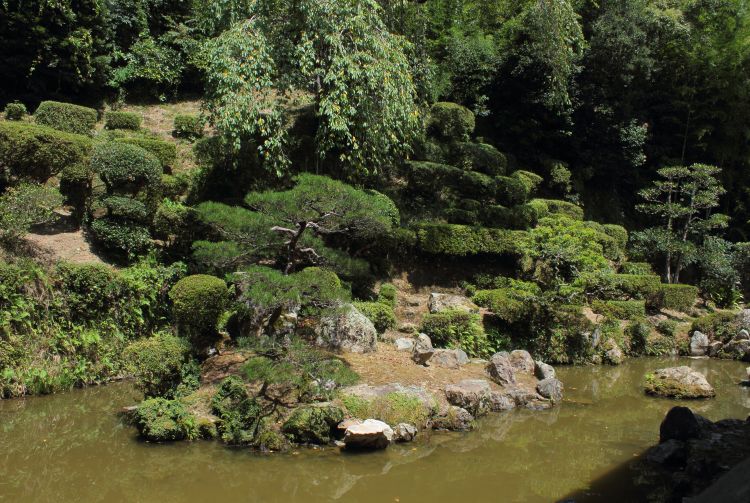
Little Kyoto of San-in
Most of Tsuwano's major draws, such as the samurai district of Tonomachi, Taikodani Inari Shrine and the castle ruins, are easily reached on foot or on rented bicycles. The town is home to some unique events and festivals like Sagimai , the elegant Heron Dance, and the thrilling horseback archery known as yabusame . Thatched temples, sake breweries and a small Christian church is why Tsuwano is called "Little Kyoto."


More than can be seen in a day
Some visitors come just for a day on their way to or from the nearby tourist spots of Hagi or Yamaguchi , but you can easily spend a couple of days here exploring the sights. There is a wide range of museums dedicated to local personalities like the great novelist and poet Mori Ogai whose childhood home is viewable next door, and Mitsumasa Anno, an illustrator and writer of children's books.
The town has a selection of Western-style hotels and numerous traditional inns and minshuku known for serving delicious food.
Hot springs, papermaking workshops and a real steam locomotive
Away from the town center are hot springs, a washi paper-making workshop and Horiteien, 10 kilometers away up a scenic valley but easily accessible by bus, is a large manor house that was once the home of the prosperous Hori family, with gardens that are particularly popular for autumn foliage.
The most romantic way to access Tsuwano is to take the Yamaguchi SL, one of the few working steam locomotives left in Japan. The train arrives in Tsuwano after passing over the mountains from Yamaguchi.
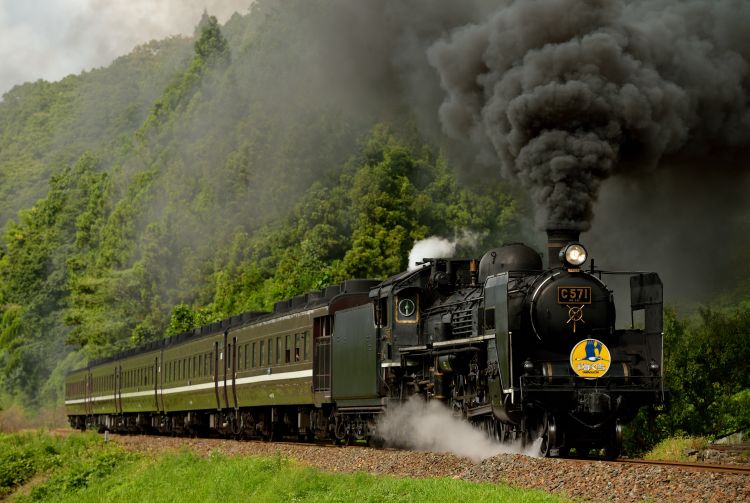
The last home of Sesshu, the greatest painter of medieval Japan
Masuda is a small coastal town that serves as the transportation hub for the western Iwami area. Two of the greatest creative figures in Japanese history lived here: Kakinomoto Hitomaru, the 7th-century poet now revered as the “God of Poetry,” and Sesshu Toyo, the famous artist and Zen monk who left behind fantastic Zen gardens at nearby temples. You can learn about his life at the Sesshu Memorial Museum.




Places for art and trekking
About a kilometer from Masuda Station is a large arts and culture center called Gran Toit, French for “big roof” since all the buildings are clad in the local roof tiles. Many events and performances take place here, and the art museum is known for quality exhibitions.
Up in the mountains near the border with Hiroshima is Hikimi Gorge, a popular area for camping and hiking in the summer and one of the region's best places for viewing the autumn colors. Nearby Minoji Yakushi is an impressive restored farmhouse with many displays of rural life from times gone by.

Hot springs and mythical dances
The area has many small hot springs, both in the mountains and near the many beaches in the area, interspersed with cliffs and coves. Like everywhere else in the region, there are dynamic performances of Iwami Kagura , based on myths and full of dance and gorgeous costumes. This is performed at the many scenic shrines that dot the area and at the many small festivals that take place year-round.




















































